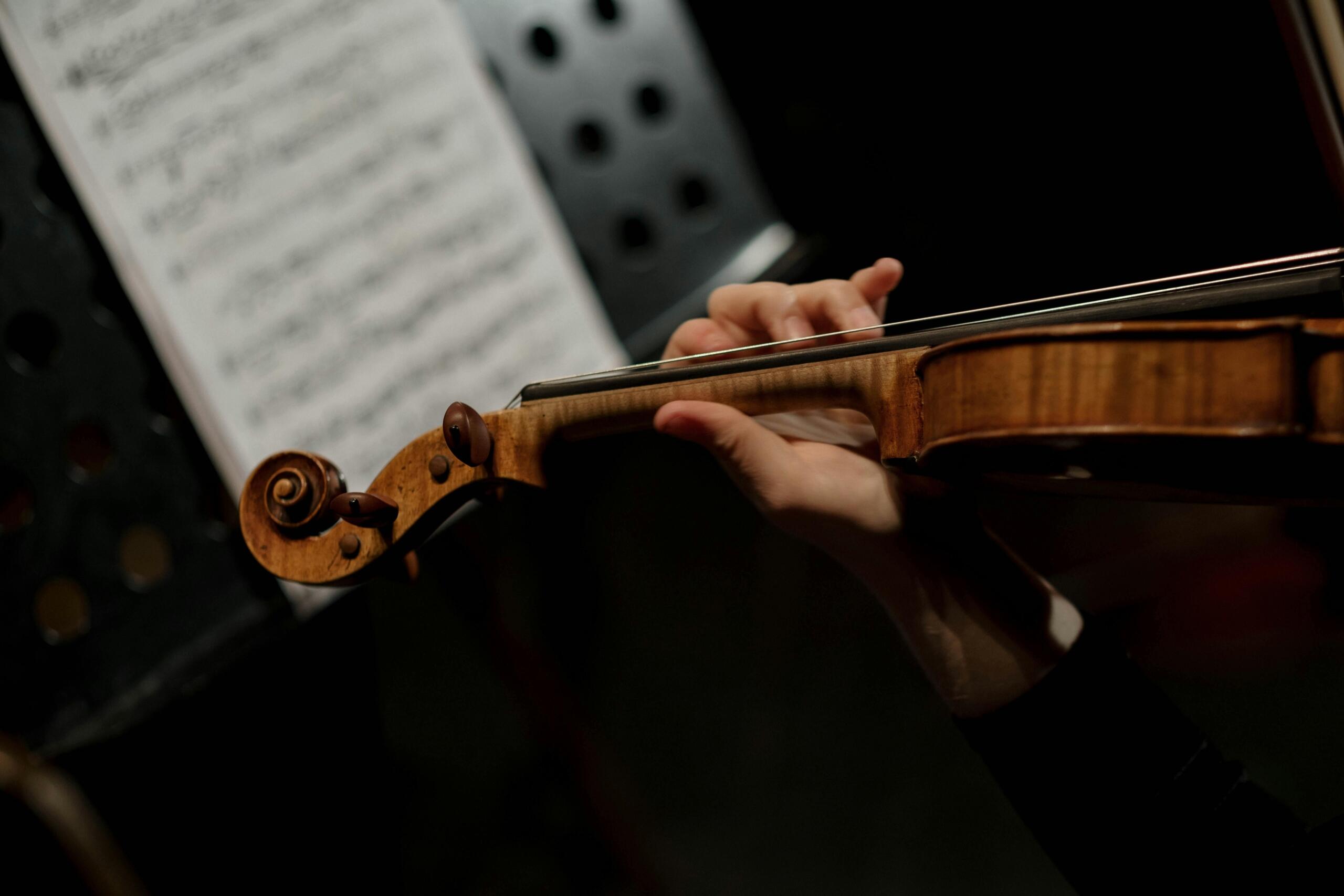I know that the most joy in my life has come to me from my violin
Albert Einstein, Scientist
Musicians have long been attracted to the expressive tone and emotional depth of the violin. Its voice can sing, cry, whisper or soar, capturing the full range of human feeling. Throughout centuries, the violin has dazzled and intrigued musicians, composers, and listeners alike.
Beyond performance, the violin has profoundly shaped the work of great composers across eras. In the Baroque period, Antonio Vivaldi wrote hundreds of concertos that showcased expressive power of the violin, influencing later masters like Johann Sebastian Bach, whose violin sonatas remain cornerstones of the repertoire. During the Classical era, Mozart and Beethoven used the violin to explore new possibilities in their concertos and string quartets, expanding the instrument’s role in orchestral and chamber music.

The Role of Violinists in Music
In every symphony orchestra, the violinist plays a key role, often leading the ensemble as concertmaster and guiding its sound. Whether it's a symphonic masterpiece in the grand concert halls of Vienna, a chamber group in a local church, or a solo sonata in the studios of the Berlin Philharmonic, violinists play a key role in music both as soloists and orchestra members.
Beyond performing, many also contribute to music education, mentoring young musicians and ensuring that the tradition of classical music continues into the next age. Let's take a quick look at the role violinists may play in different musical contexts:
- In orchestras, the concertmaster, or lead violinist, guides phrasing and tone, influencing the entire ensemble.
- In chamber groups, violinists engage in intimate musical dialogue with other musicians, showcasing balance and artistry.
- In solo performances, a violinist commands the stage: communicating emotion and virtuosity through pure sound against a larger soundscape.
Movies on the violin, such as the famous film Amadeus, can inspire you to take up a new instrument or simply get you listening to a new genre.
Legendary Violinists Through the Ages
The story of the violin begins centuries ago, shaped by the hands of creative geniuses and tireless performers who brought violin concertos to life.
1600-1750
Baroque
Key violinists include Antonio Vivaldi and Arcangelo Corelli. Notable works: The Four Seasons, Concerti Grossi.
1750-1820
Classical Era
Mozart and Haydn are among the most important violinists and composers of this era. Notable works: Violin Concerto No. 3, String Quartets.
1820-1900
Romantic Era
Violinists like Paganini and Joachim dominated music. Notable works: 24 Caprices, Hungarian Dances.
1900-Today
Modern
Innovative violiists like Heifetz, Perlman, Hahn, and Chua attract new fans for a modern era.
The Baroque Era (1600-1750)
The Baroque Era (1600–1750) was a period of dramatic artistic expression, marked by grandeur, contrast, and rich detail in music, art, and architecture. In music, it saw the rise of composers like Bach, Handel, and Vivaldi, who developed forms such as the concerto, fugue, and oratorio, emphasizing emotion and ornamentation.
Antonio Vivaldi (1678–1741)
Often hailed as the “Red Priest,” Vivaldi transformed the violin’s role in classical music. His Four Seasons concertos vividly paint scenes of nature through melody and rhythm, making them some of the most beloved works ever composed. His compositions allowed the violin to sing with emotion, setting a foundation for all later classical violinists.
Vivaldi taught music to orphaned girls in Venice at the Ospedale della Pietà from 1703 to 1740, writing concertos specifically to showcase their exceptional talent.
Arcangelo Corelli (1653–1713)
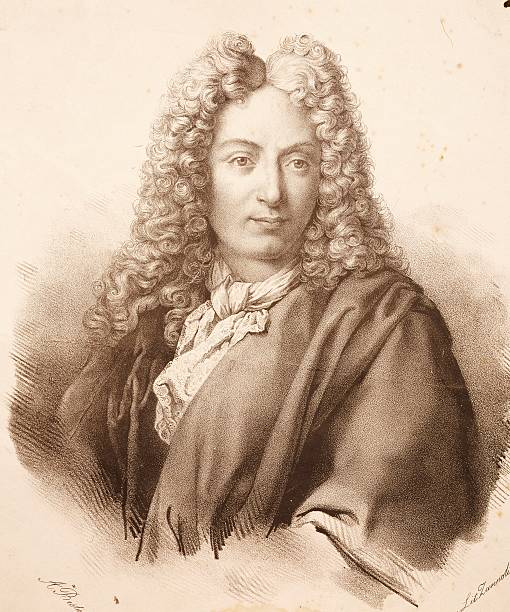
Corelli played a key role in shaping early violin technique and music education. He was a brilliant violinist and one of the first musicians to develop a clear method for teaching and performing on the instrument. His graceful style focused on beautiful tone, balanced phrasing, and precise bow control, elements that remain central to classical violinists today.
Many great musicians and composers like Vivaldi, Handel, and Bach studied and admired Corelli's work. His influence continued through his students, who spread his techniques across Europe, laying the foundation for generations of violinists to come.
Classical Era (1750-1820)
The Classical Era (1750–1820) emphasized clarity, balance, and form, with music becoming more structured and refined. For the violin, this period brought significant advancements in technique and repertoire, with composers like Mozart, Haydn, and early Beethoven writing elegant sonatas, concertos, and chamber works that showcased the instrument’s expressive range and lyrical potential.
Joseph Haydn (1732–1809)
Haydn played a major role in shaping the sound and structure of classical music during a time of great innovation, Haydn helped define how musicians collaborated in small ensembles. He approach encouraged violinists to move beyond technical display and focus on expression, phrasing, and communication with other musicians: skills that remain central to classical performance today.
Through his long career as a composer, Haydn wrote more than 80 string quartets and 100 symphonies. In his quartets, the violin often carries the melody, leading the musical conversation while blending harmoniously with the viola, cello, and second violin. This clear and lyrical style influenced generations of classical violinists and composers, including Wolfgang Amadeus Mozart and Ludwig van Beethoven.
Wolfgang Amadeus Mozart (1756–1791)
A violinist born into a highly musical family, Wolfgang Amadeus Mozart began playing the violin at a young age, guided by his father, Leopold Mozart, a respected teacher and composer. Mozart toured Europe as a child prodigy, performing for royal courts and dazzling audiences with his extraordinary memory and creativity.
Mozart's genius was apparent at a very young age. At the age of four, he could learn a song on the clavier (a stringed keyboard instrument) in just half an hour.
Mozart’s five violin concertos, written when he was only 19, are celebrated for their lyrical melodies, graceful structure, and emotional depth. The Violin Concerto No. 3 in G Major remains a favorite among young violinists, capturing both elegance, joy, and technical skill. His works continue to be studied and performed by musicians worldwide, from beginner students to world-class performers like Itzhak Perlman and Hilary Hahn.
Romantic Era (1820-1900)
The Romantic Era (1820–1910) focused on emotion, individuality, and dramatic expression. Violin music became more passionate and technically demanding, with composers like Brahms, Tchaikovsky, and Mendelssohn writing powerful concertos and expressive solo pieces that pushed the instrument’s limits and highlighted its deep, lyrical voice.
Niccolò Paganini (1782–1840)
Paganini revolutionized how people thought about the violin and what it could do. Born in Genoa, Italy, Paganini performed across Europe from a young age, astonishing audiences with his lightning-fast bowing, double stops, harmonics, and left-hand pizzicato. Paganini’s innovations helped define the Romantic age, where passion, individuality, and technical freedom became the new ideals of classical music.
Paganini’s performances were events that blended music, drama, and spectacle. His long fingers, flexible hands, and unmatched control gave him a unique sound and style that made his name legendary. He often performed his own works, most famously the 24 Caprices for Solo Violin, which remain one of the hardest challenges for any violinist. His unmatched virtuosity and stage presence inspired other musicians, including composers like Franz Liszt, who sought to bring similar emotion to the piano.
Joseph Joachim (1831–1907)
Joachim stands as one of the great figures linking the Romantic period to the modern world of classical music. Born in Hungary, he began playing the violin at the age of seven and was recognized early as a prodigy.
Joachim became known for his warm, expressive tone and deep understanding of musical structure and meaning. His close friendship and collaborations with Johannes Brahms and Robert Schumann helped shape the Romantic violin tradition, and Brahms even dedicated his famous Violin Concerto in D Major to him. His lifelong dedication to classical music helped define what it means to be not just a skilled performer, but an artist who serves both the music and the listener.
20th Century to Present
From the 20th century to the present, violin music has embraced innovation, experimentation, and diversity of style. Composers like Stravinsky, Shostakovich, and John Adams have expanded the violin’s role through bold harmonies, new techniques, and cross-genre influences, while contemporary performers continue to explore both classical traditions and modern, genre-blending expressions.
Jascha Heifetz (1901–1987)
Heifetz’s performances set a benchmark of technical perfection. Born in Vilnius, he began playing at age 3 and debuted internationally at 16. His precision and intensity made him one of the best violinists of all time.
Itzhak Perlman (b. 1945)
Itzhak Perlman, one of the most beloved figures in classical music, began playing the violin at age 3 after hearing it on the radio. Despite contracting polio as a young child, his perseverance and artistry inspired millions.
Over a career spanning more than 60 years, Itzhak Perlman has performed with every major orchestra, recorded countless albums, and appeared on global stages—including collaborations with fellow musicians in both traditional and crossover genres. His soulful interpretations of the violin concerto repertoire, from Beethoven to Tchaikovsky, have earned him a place among history’s greatest performers.
Hilary Hahn (b. 1979)
A modern virtuoso, Hahn combines precision with emotional transparency. She began performing internationally as a teenager and has since become a leading advocate for new musical works. Her artistry shows how the violin continues to evolve in our time.

Prominent British Violinists 🇬🇧
Nicola Benedetti
Born in Scotland in 1987, Nicola Benedetti is one of our greatest contemporary violinists in the UK. She started learning to play the violin at the age of 4 and at age 8 she became the leader of the National Children's Orchestra of Great Britain.
In 2014, she played for an audience of 9 million viewers at Commonwealth Games, and was the youngest recipient ever awarded the Queen's Medal for Music in 2017.
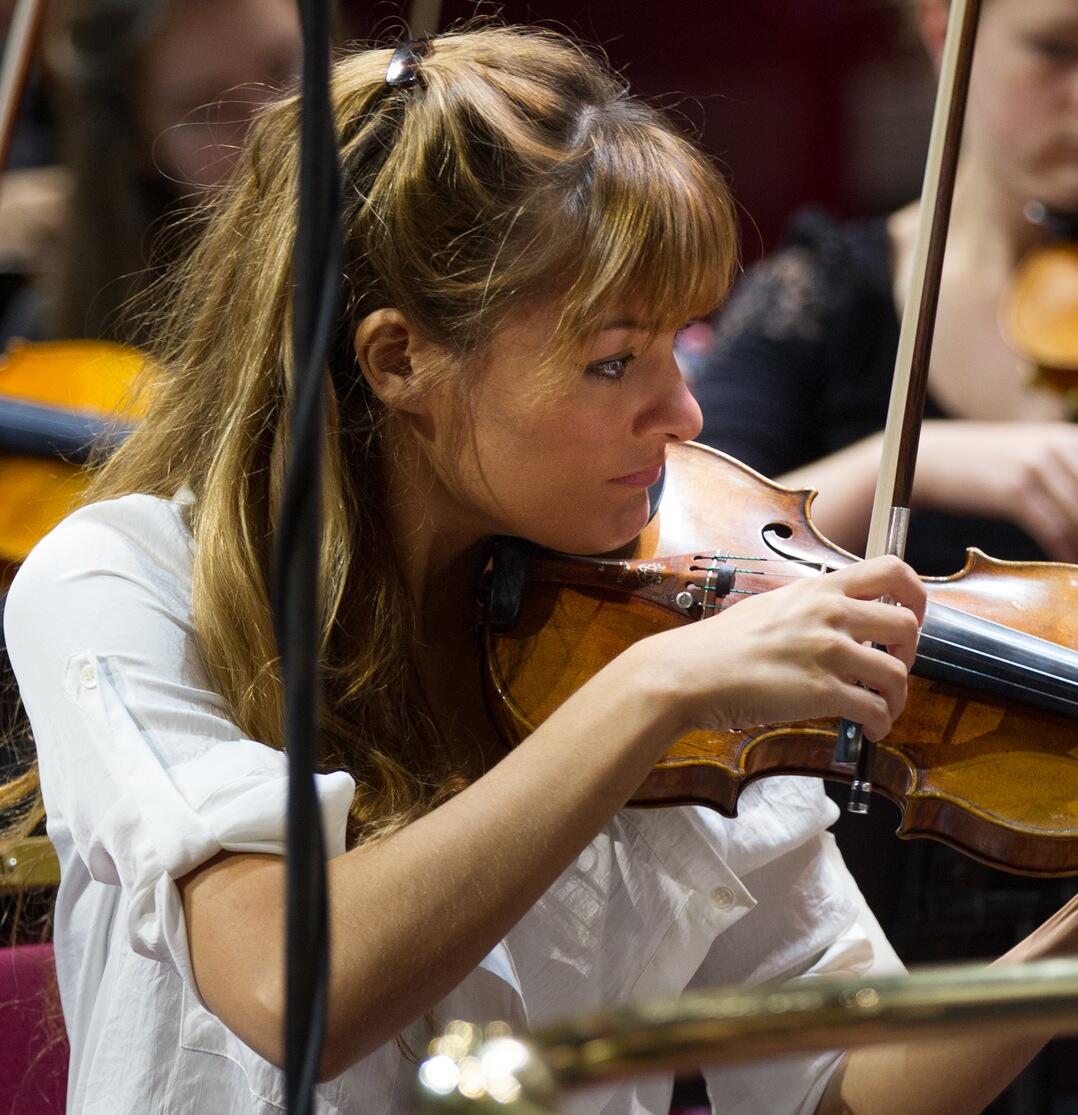
A violinist turned global ambassador, Benedetti’s career blends virtuosic performance with education. She founded the Benedetti Foundation to support young musicians, making classical music more accessible worldwide.
Start taking violin lessons on Superprof.
Nigel Kennedy
Known for his rebellious image and charisma, Kennedy transformed perceptions of the violinist with his crossover projects. His rendition of the Four Seasons recording remains among the best-selling classical albums ever. Kennedy made his career early on in the classical field and has most recently branched out to jazz, klezmer and other musical genres.
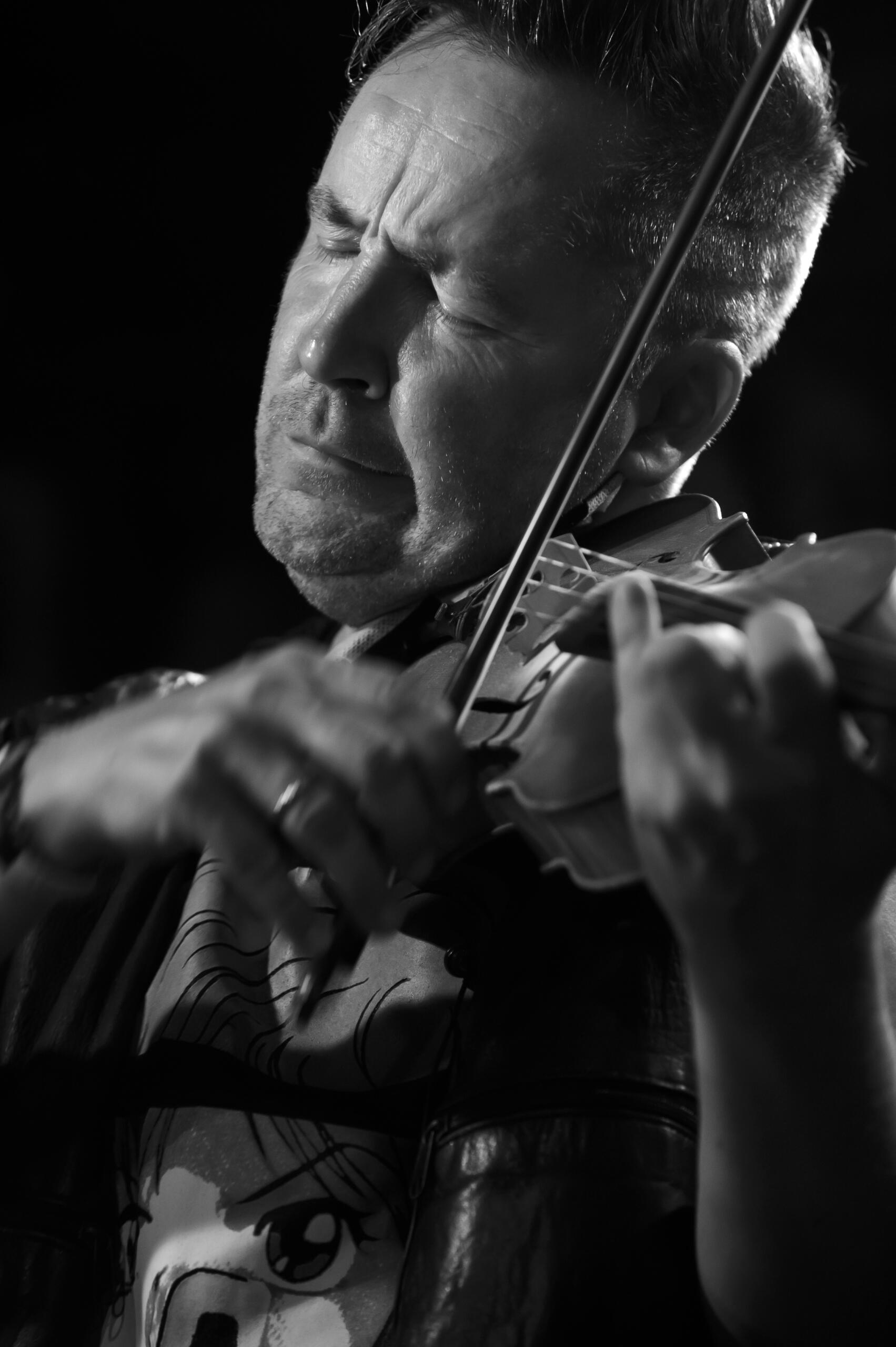
Kennedy was born into a musical family with his grandfather being Lauri Kennedy, a principal cellist with the BBC Symphony Orchestra and his grandmother was a pianist. A prodigy, he began studying music at an early age and at the age of 16 he was invited by Stephane Grappelli to appear at New York's Carnegie Hall.
Kennedy has earned a place as one of the best-selling violinists and creator of the best-selling classical recordings ever known.
Get motivated to play violin with these famous quotes on the violin.
Yehudi Menuhin (1916–1999)
Yehudi Menuhin, a violinist born in New York, began performing at a young age and became a global sensation by his teens. He combined technical mastery with deep humanity, using music as a force for peace and cultural connection. His contributions as a conductor and educator continue to influence generations of violinists.
Menuhin is not of British decent himself but spent most of his career performing in Britain. He is widely considered one of the greatest violinists of the 20th century.
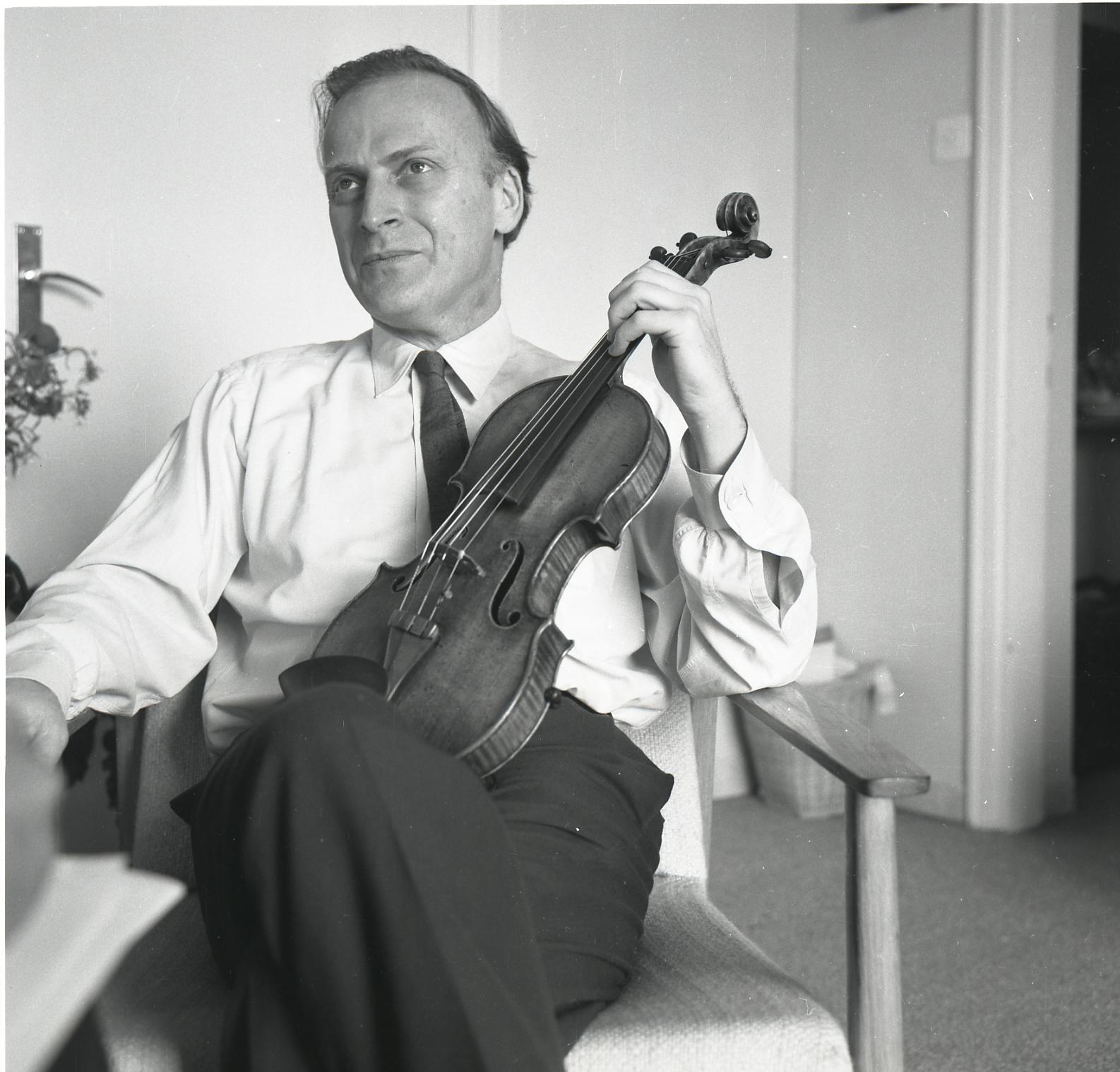
During his expansive and incredible career, Yehudi established schools, festivals, competitions for young violinists, and performed on thousands of stages all over the world. His recording contract with EMI lasted almost 70 years and is the longest in the history of the music industry.
Vanessa-Mae Nicholson
Blending classical and pop influences, Vanessa-Mae reimagined the violin for modern audiences. Her electrifying stage presence and crossover hits brought classical music to younger listeners.
Born in Singapore in 1978, Nicholson was adopted into a British family and moved to London at the age of 4 where she began practising the violin right away. An accomplished young prodigy, Nicholson became the youngest soloist to record both the Beethoven and Tchaikovsky violin concertos. Nicholson also competed for Thailand in alpine skiing in the 2014 Winter Olympics. Talk about a go-getter!
Check out these violin lessons online now.
Andrew Manze
Born in 1965, Andrew Manze is an English conductor and violinist. He is widely celebrated as one of the most 'stimulating and inspirational conductors of his generation'. A Baroque specialist, Manze’s performances highlight the historical roots of violin playing. His career as a conductor and teacher reflects a lifelong devotion to authenticity in music.
After his time at Cambridge University, Manze studied the violin and quickly became a leading specialist in historical performance practice in the world. Manze is also in great demand as a conductor worldwide and has long-standing relationships with a number of prestigious international orchestras.
Books on the violin will help you to live your passion thoroughly!
Chloe Hanslip
One of Britain’s youngest performing violinists, Hanslip began recording at age 13. Her dynamic interpretations and diverse repertoire make her a standout among today’s classical musicians. Hanslip began playing the violin at the age of 2 and was already performing solos at the age of 4. When she was only 5 yrs old she was invited by Yehudi Menuhin to study at his school. He had said about her, "rarely have I seen such an inner serenity, sense of peace and poise."
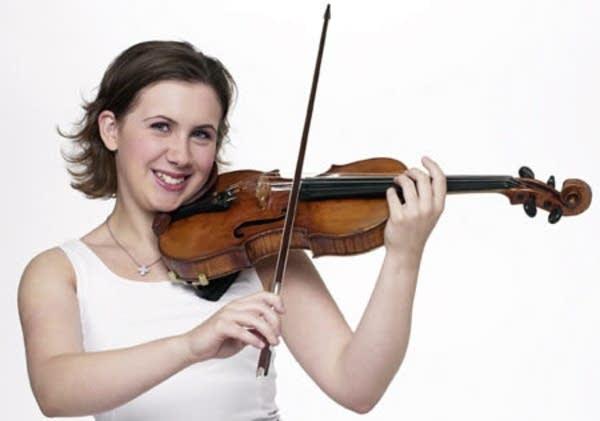
By 10 Chloe was already playing at major international concert halls, including Carnegie Hall in New York City and the Royal Albert Hall in London. Hanslip has received numerous awards for her talented violin skills and at the age of 13 was the youngest recording artist ever to be signed to Warner Classics UK.
Search for violin lessons Winnipeg now.
🎻 Eddie Jobson
Edwin "Eddie" Jobson, born in 1955 is an English keyboardist best known for his use of synthesizers and for being part of talented rock bands, including Curved Air, Roxy Music, UK, Scott Tixier, and the very famous band Jethro Tull. Known for innovation, Jobson introduced the electric violin to rock audiences. His work in progressive rock bands proved that violinists could thrive beyond classical music, expanding the instrument’s possibilities.
Jobson also built a successful career as a composer for TV (Nash Bridges) and film soundtracks (Disney film Brother Bear). He won the Clio Award for original music scoring in 1988 and continued to receive accolades as a winner and finalist for years afterwards.
Violins are present in every culture on Earth! Learn more about this incredible instrument.
Canadian Violinists Making an Impact 🇨🇦
Canada has produced a generation of violinists who bridge classical tradition and modern innovation.
James Ehnes
James Ehnes is one of the most acclaimed classical violinists of his generation. Born in Brandon, Manitoba, he began playing the violin at age four and quickly showed exceptional musical ability. By his teenage years, Ehnes was already performing with major symphony orchestras in Canada and abroad.
Known for his impeccable tone, effortless precision, and deep emotional range, Ehnes has built an international career performing with world-class ensembles, including the London Philharmonic, Chicago Symphony, and Berlin Philharmonic. Beyond performing, Ehnes is deeply committed to nurturing young musicians through masterclasses, recordings, and outreach.
Jonathan Crow
Jonathan Crow stands among Canada’s most respected violinists and is admired for his artistry and leadership in music education. Born in Prince George, British Columbia, Crow began playing the violin at a young age and went on to study at McGill University. His career flourished rapidly, and by age 19 he was already serving as concertmaster of the Montreal Symphony Orchestra—one of the youngest in the ensemble’s history.
Today, Crow is the Concertmaster of the Toronto Symphony Orchestra and a professor at the University of Toronto, where he teaches and mentors young musicians. His work in both performance and education highlights the dual role of the modern violinist: artist and educator. Crow’s performances are known for their precision, warmth, and insight. Whether leading the symphony orchestra or performing chamber music, he brings a thoughtful, communicative energy to every stage.
Violinists Have Changed the World
You don't need to be a musical aficionado to know that violinists have shaped musical history around the world. From Paganini’s fireworks to Perlman’s lyricism, from Menuhin’s humanity to Hahn’s modern artistry, violinists have shaped how the world experiences music and continue to inspire a new generation of artists.
Their violin concertos, recitals, and recordings stand as testaments to creativity, discipline, and heart. And their influence extends far beyond the concert hall and lives in every young musician who picks up a violin for the first time.
References
- Reporter, G. S. (2024, August 21). Vivaldi taught Venetian orphan girls – did they help write his music in return? The Guardian. https://www.theguardian.com/music/article/2024/aug/13/vivaldi-taught-venetian-orphan-girls-did-they-help-write-his-music-in-return
- Jonathan Crow - Toronto Symphony Orchestra. (n.d.). https://www.tso.ca/about/orchestra/members-of-the-orchestra/jonathan-crow
- Sadie, & Stanley. (2025, September 23). Wolfgang Amadeus Mozart | Biography, Music, The Magic Flute, & Facts. Encyclopedia Britannica. https://www.britannica.com/biography/Wolfgang-Amadeus-Mozart

